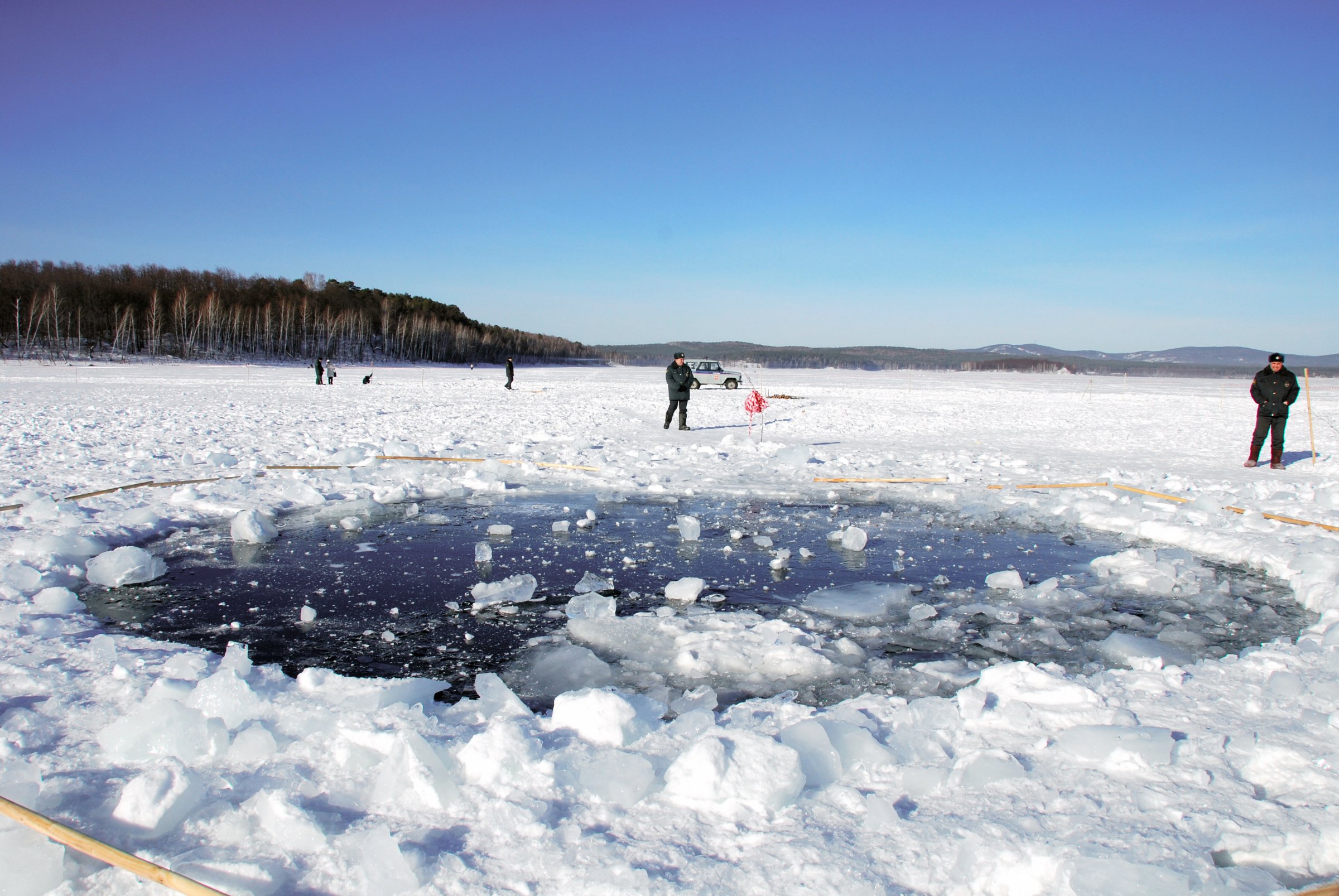
Tell the truth: Did you stay inside today? If you did, was any of it due to the sky-is-falling (literally), Earth-shaking (again, literally) reports that at any moment we could be hit by a city-killing meteor? According to research by Peter Brown of the Meteor Physics Group at the University of Western Ontario, since 2000, there have been 26 meteors that exploded in the Earth’s atmosphere and released the equivalent of at least 1,000 tons of TNT (1 kiloton); four of those packed a bigger punch than the 16-kiloton bomb that leveled Hiroshima.
So scary news, right? Well, not necessarily.
First of all, remember that “exploded in the Earth’s atmosphere” part? That’s no small thing. The atmosphere has been pretty effectively protecting us from harm for a long, long time. Picture the surface of the moon; now picture the surface of the Earth. That’s the difference between a world that stands exposed to the shooting gallery of space and a world that, in effect, wears a bullet-proof vest (OK, plate tectonics and volcanoes resurface the Earth and cover up craters, but not nearly enough to fix the kind of damage that’s been done on the moon).
What’s more, those 26 space rocks over the past 14 years are just the tiniest fraction of the amount of space rubble that rains down on us harmlessly all the time. According to Don Yeomans of the Jet Propulsion Laboratory’s Near Earth Object Program Office—the NASA outfit that tracks the sky for dangerous space ordnance—about 100 tons of rocks and dust enter the atmosphere every day. Most of it is the size of a pea or even a sand grain, he says. But there’s at least one basketball-sized object each day and one as big as a Volkswagen each month—and none of them hurt us.
If the only damage a bigger space rock could do was drill a hole in the ground no larger than itself, there wouldn’t be much to worry about. But the faster an asteroid moves the more energy it’s carrying, and when that energy is released—either in the atmosphere or on the ground—it is indeed like a bomb going off. The asteroid that exploded over the Tunguska region in Russia in 1908 measured only about as far across as a football field and yet unleashed a 40-megaton (or 40 million tons of TNT) blast, wiping out trees across an 825 sq. mi. (2,136 sq. km) footprint of forest. The 2013 Chelyabinsk asteroid that also exploded over Russia, injuring 1,000 people, measured just 66 ft. (20 m) across
Yeomans calculates that his office has now has now found 95% of the asteroids 1 kilometer (.6 mi.) or larger that could do damage on a global scale—say, causing the kind of climate disruption that wiped out the dinosaurs—and 30% of the ones 140 meters (460 ft.) across that could do local or regional damage. Knowing the rocks’ trajectory gives us a chance either to deflect them or at least evacuate the area they’d hit in the unlikely event they were on a collision course with Earth. So is he worried about what Brown and his colleagues in Canada have discovered?
“They’ve taken their data and plotted it up and made it look interesting,” he says. “But there’s only one meteor [Chelyabinsk] that could have done—and did do—any damage.”
The rest? Well, we kind of knew they were there all along. It’s a little like knowing there’s only one burglary in your neighborhood every 10 years, and then learning that three would-be burglars in the vicinity are arrested every week. That’s scary, but all it means is that the police are doing their job—just like the atmosphere is doing its. What’s more, the Canadian findings were publicized in part by an independent group called the B612 Foundation that is trying to raise money for an infrared space telescope that would also hunt for dangerous objects. The people behind B612 are legitimate scientists and include two former astronauts, and NASA plans to use their data if they ever get their instrument launched, but the fact remains that they’re currently seeking backers and it never hurts to play up the stakes.
“They’re in a sales mode,” Yeomans says bluntly.
Even if the B612 group has something important to sell, that doesn’t mean the end is imminent. The Earth has been around for 4.5 billion years; we’ve probably got a pretty good run left.
More Must-Reads from TIME
- Cybersecurity Experts Are Sounding the Alarm on DOGE
- Meet the 2025 Women of the Year
- The Harsh Truth About Disability Inclusion
- Why Do More Young Adults Have Cancer?
- Colman Domingo Leads With Radical Love
- How to Get Better at Doing Things Alone
- Michelle Zauner Stares Down the Darkness
Write to Jeffrey Kluger at jeffrey.kluger@time.com